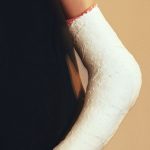(HealthDay News) — Bronchitis is typically caused by a respiratory virus, and much less frequently, by a bacterial infection, the American Lung Association says. Risk factors include having close contact with someone who has bronchitis, failure to get age-appropriate vaccinations, and exposure to tobacco smoke, fumes, dust and air pollution. The American Lung Association says symptoms of bronchitis typically include: Coughing up mucus that may be yellow or green. Runny and stuffy nose starting a few days before chest congestion. Feeling tired. Sore ribs from prolonged periods of coughing. Wheezing or a whistling sound while breathing.
A little about: Weekly Gravy
All Sauce from Weekly Gravy:
Bonding With Friends — Without Food

Socializing with friends is great for physical and emotional well-being, but if all of your get-togethers are at restaurants or bars, it can be hard to stick to a healthy eating plan. Try these ideas for having fun without placing the emphasis on food. Both you and your friends will benefit. Turn your brunch group into an arts project. Whether you’re quilting, knitting or crafting, busy hands can’t reach for snacks. If you’d rather look at art than create it, try going to different museums rather than bar-hopping with your friends. Want to get even more physical? Grab a few friends or another couple and sign up for a 5K or 10K race, and hold your own training sessions once or twice a week until the big event. Or choose a charity and do volunteer work as a group on a weekend afternoon. If you’ve been sedentary, step up to exercise with a more relaxed activity by joining a bowling or softball league. These are also great bonding options to do with co-workers if you want to socialize outside the office. Take along healthy treats for refueling afterwards. When you do want to get together over food, it’s easier to control calories and portion sizes if you do the cooking. Grilled chicken and fish in warm weather, and hearty vegetarian chili and stews in cold… read on >
Can Strict Blood Pressure Control Lower Dementia Risk?

Tight control of your blood pressure won’t necessarily spare you from full-blown dementia, a new trial concludes. But it might lower the risk of slight declines in thinking and memory, a condition known as mild cognitive impairment (MCI), the researchers added. The clinical trial is the “first study in history to show that any intervention can reduce your risk of developing mild cognitive impairment, an early form of dementia,” said lead researcher Dr. Jeff Williamson. He is a professor of gerontology and geriatric medicine at Wake Forest School of Medicine, in Winston-Salem, N.C. “What is good for your heart in terms of blood pressure-lowering is also good for your brain,” Williamson added. He noted that the trial ended early, which likely affected the dementia result. “We just didn’t have enough dementia cases develop over time” in the group with less-restricted blood pressure, he explained. High blood pressure affects more than three-fourths of people over the age of 65, and it has been identified as a potential risk factor for MCI and dementia in observational studies, the study authors said in background notes. The new clinical trial focused on nearly 9,400 people, average age 68, who had been randomly assigned to treatment that would keep their systolic blood pressure at or below a goal of either 120 or 140 mm Hg. Participants were all at high… read on >
Why Sleepless Nights Can Mean More Painful Days

If you were up all night and you ache all over the next morning, your lack of sound slumber might be to blame. New research found that sleep loss delivered a double whammy to the brain that all but guaranteed greater levels of body pain. “Activity in the somatosensory cortex, previously associated with the location and intensity of pain, was enhanced following sleep loss,” explained study author Adam Krause. And “in two regions called the striatum and the insula, sleep deprivation decreased the activity associated with pain [relief],” he added. These regions control the release of dopamine, often called the “feel-good” hormone. Krause is a Ph.D. candidate with the Center for Human Sleep Science at the University of California, Berkeley. During the study, 25 healthy, young participants got the normal eight hours of sleep one night. A week or so later, the same group underwent a night of no sleep whatsoever. After each session, all the volunteers underwent “thermal pain sensitivity” tests, followed by MRI scans to monitor brain activity while their legs were exposed to uncomfortable levels of heat. After a full night of sleep, most participants reported feeling heat discomfort at about 111 degrees Fahrenheit. But after a night of no sleep, that pain threshold dropped to 107 degrees F. Brain scans pinpointed the neurological basis for the uptick in pain sensitivity following… read on >
7 Ways to Cut Calories in Beverages

When counting calories, don’t forget those in beverages. You might not realize how many you’re drinking. For instance, if you have a fancy coffee to start your day, a large soda with lunch and sweet tea with your afternoon snack, you could tally up hundreds of calories before you factor in your first bite of solid food. Here are seven ideas for cutting back on these calories to speed weight loss and give you more leeway for satisfying meals: Number 1: Make water, plain tea or black coffee your default drink. Even diet sodas aren’t good for your health, so avoid them. Instead, add a splash of fruit juice to a glass of sparkling water and top it off with a lemon, lime, cucumber or watermelon slice. Number 2: For every other beverage, consider its nutritional value before you take a sip. For instance, an 80-calorie glass of nonfat milk delivers protein, calcium and vitamin D, while soda with 80 calories has no nutrients at all. Number 3: Read every label carefully. It might list calories in an 8-ounce serving, but if the bottle contains 20 ounces and you drink it all, you’ve consumed two and a half servings. Number 4: Beware of any beverage that gets most of its calories from sweeteners, including (but not limited to) corn syrup or high-fructose corn syrup, dextrose,… read on >
Fun Moves for Better Agility

Agility, or the ability to react quickly to change without losing your balance, is an important skill not only for playing sports, but also for everyday living. Strength training helps improve agility, but so do balance and coordination exercises. Simple moves include standing on one foot, standing on tiptoe and walking heel to toe. Specific activities that boost agility: Yoga Tai chi Ladder and hurdle drills Jumping rope A great do-anywhere exercise is controlled marching in place. Lift your right arm overhead as you lift your left leg, bending the knee at a 90-degree angle. Hold for three to five seconds, then switch sides. Continue alternating arms and legs for a total of three to five minutes. For better agility and coordination, here are three more exercises that will help: First, toss a small, soft ball from one hand to another, keeping your eyes on the ball at all times. For added difficulty do this as you balance on one leg, lifting the other leg by bending the knee at a 90-degree angle. Do 10 tosses, reverse legs and repeat. Next, bounce a small agility ball against a wall and catch it, first with two hands, then with your dominant hand and finally with your non-dominant hand. The ball will bounce in different directions, requiring quick action. Be sure to do this in an open… read on >
The ‘Choking Game,’ the ‘Bird Box Challenge’: Which Kids Are Most at Risk?

The “choking game” — and other clearly ill-advised and dangerous internet challenges — leave many parents wondering what drives teens to take the bait and participate. Now, a new study suggests that an underlying psychological disorder may be one reason why some kids jump at online dares such as the “Bird Box” challenge, where people walk around blindfolded, and the Tide Pod challenge, daring people to eat laundry detergent. The French researchers, who decided to focus on the choking game, found that nearly 10 percent of the almost 1,800 middle schoolers surveyed had tried it. Those who had participated were about twice as likely to be depressed or to have a conduct disorder. “Parents of adolescents with behavioral problems, as well as parents of depressed teens, need to be aware of this serious problem in order to educate and monitor their vulnerable youth,” said Dr. Victor Fornari. He directs child and adolescent psychiatry at Zucker Hillside Hospital in Glen Oaks, N.Y., and Cohen Children’s Medical Center in New Hyde Park, N.Y. Fornari said this study highlights that “prevention strategies need to be developed to intervene in this dangerous behavior.” The choking game is a thrill-seeking activity where people self-strangulate or have someone else strangle them to the point of passing out. Supposedly, the lack of blood and oxygen to the brain causes a temporary euphoric… read on >
Many Parents Conflicted About Opioids for Their Teens’ Pain

American parents aren’t sure whether their teen and young adult children should be prescribed opioid painkillers, and many don’t know there are other ways to get pain relief, a new survey finds. The poll included more than 1,000 parents of children aged 13 to 24, one-third of whom had been prescribed opioid painkillers. While more than half of the parents were concerned their child may be at risk for opioid addiction, nearly two-thirds believed opioid painkillers were better at controlling their child’s pain after surgery or an injury than over-the-counter medications or non-drug treatments. Many parents don’t know or ask about those other options, according to the Jan. 27 survey commissioned by the American Society of Anesthesiologists (ASA). “The survey results shed light on the country’s conflicted relationship with and understanding of opioids. While most parents said they were concerned about side effects and risks such as addiction, improper or recreational use and overdose, they still thought opioids work best to manage pain,” Dr. Linda Mason, ASA president, said in a society news release. While 59 percent of parents said they would talk to their child’s doctor about pain management options, only 37 percent of those whose children were prescribed opioids actually did. The survey also found that nearly nine out of 10 parents knew that non-opioid, over-the-counter medications such as acetaminophen (Tylenol), ibuprofen (Advil… read on >
Small Fitness Gains Provide Big Heart Disease Protection: Study

Even a slight improvement in your heart/lung fitness could reduce your risk of a heart attack, a new study reveals. Between 2006 and 2008, researchers assessed the cardiorespiratory (heart/lung) fitness of just over 4,500 men and women in Norway. None had heart disease, high blood pressure or cancer, and most were considered at low risk for heart disease over the next 10 years. By 2017, however, 147 of the study participants had suffered a heart attack or developed angina, conditions caused by narrowing or blockage of heart arteries. More investigation showed that the risk of heart attack and angina steadily declined as cardiorespiratory fitness increased. “We found a strong link between higher fitness levels and a lower risk of heart attack and angina pectoris over the nine years following the measurements that were taken,” said Bjarne Nes of the Cardiac Exercise Research Group (CERG) at the Norwegian University of Science and Technology in Trondheim. “Even among people who seem to be healthy, the top 25 percent of the most fit individuals actually have only half as high a risk as the least fit 25 percent,” he said in a university news release. The study used a fitness calculator developed at CERG, which measures the body’s capacity to transport and use oxygen during exercise. It found that for each increase of 3.5 fitness points, the risk… read on >
Health Tip: What to Eat if You Have Arthritis
(HealthDay News) — If you have arthritis, there are foods that may help you feel better. A diet that’s rich in vitamins and minerals, and includes fruits, lean proteins, fish, vegetables, nuts and healthy oils may be most beneficial, the foundation says. But it cautions against changing too much, too soon. Gradually swap out ingredients at each meal, and you may feel a big difference in how you feel and how well you can manage your pain and discomfort, the foundation adds.









